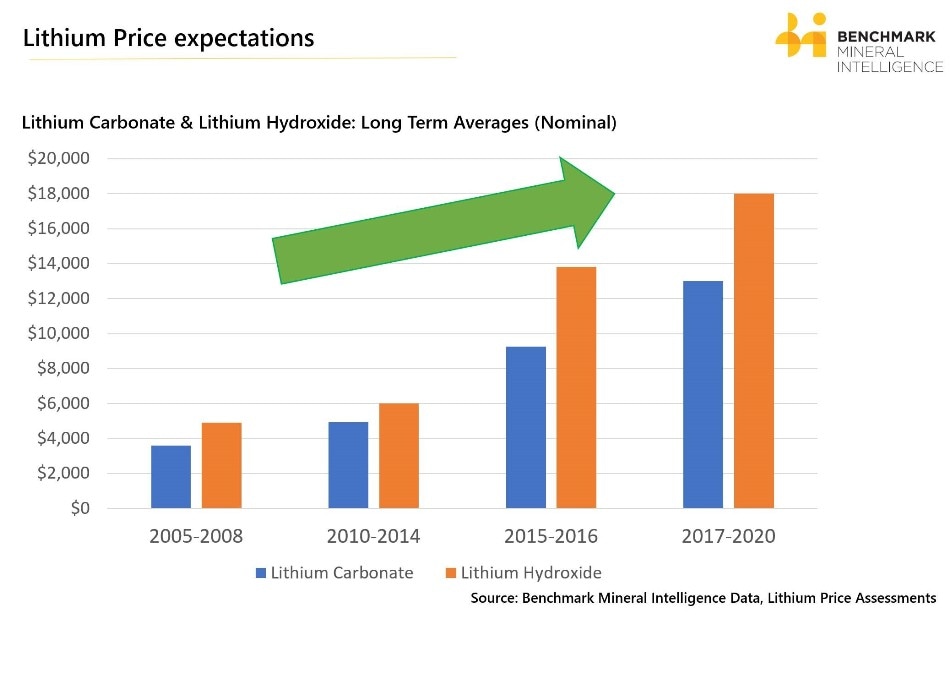Apr 28 2017
The advantages of Nano One’s patented technology were described by Dan Blondal, CEO of Nano One Materials today. Blondal explained how Nano One’s patented technology could facilitate long range electric vehicle batteries to use lithium carbonate as a substitute to expensive and supply-constrained lithium hydroxide.
 Lithium price expectations (Credit: Nano One Materials)
Lithium price expectations (Credit: Nano One Materials)
Today’s manufacturing methods necessitate that lithium hydroxide be used to supply the Tesla Gigafactory and energy dense batteries for other emerging electric vehicle manufacturers. However, Nano One’s process innovations make it possible to use lithium carbonate which is more widely available and lower cost than lithium hydroxide. We believe this is a tremendous opportunity for Nano One to disrupt the lithium supply chain.
Mr. Blondal
These market developments are supported by Benchmark Minerals Intelligence Data that reveal pricing for lithium hydroxide being about 40% more than lithium carbonate, into the predictable future. The price premium for lithium hydroxide is being determined by short supply and by raising demand for longer range nickel rich electric vehicle batteries. Nano One’s strategy could make lithium carbonate equally feasible and more competitive than hydroxide.
We believe that Nano One could also be helping lithium producers avoid the cost of upgrading to hydroxide, possibly adding hundreds of millions to the value proposition.
Mr. Blondal
Nano One’s patented technology is a flexible manufacturing platform that enables lithium carbonate (or hydroxide) to be used as feedstock together with other raw materials such as manganese, nickel, cobalt, phosphate, iron, and/or aluminum. It is a water-based procedure operating at mild pH and temperature that easily creates the energy storing cathode materials used in lithium ion batteries. The procedure is being piloted in Nano One’s demonstration unit and makes an extensive range of different lithium cathode materials for use in manganese rich, nickel rich, cobalt free, and iron phosphate batteries.